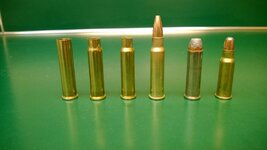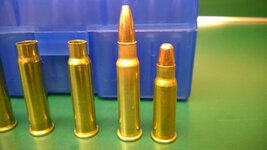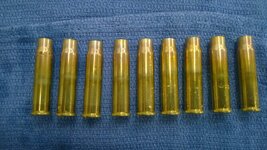Gold Supporter
Bronze Supporter
- Messages
- 3,580
- Reactions
- 12,100
I am reforming .357 Maximum brass to .257 caliber. First step is a .30 Luger die, then the .257 die. The first lot I did I didn't anneal the brass. What I had read online suggested that it may or may not be necessary for that amount of working of the brass. Having shot my first batch and suffered 80% failure through split shoulders. obviously annealing is necessary. My question is, where in the process is annealing most beneficial and where might it be harmful?? My first thought is to anneal after the .30 Luger sizing and again after the .257 sizing, but don't know if doing it twice is necessary. What are your thoughts?? Thanks!!
















